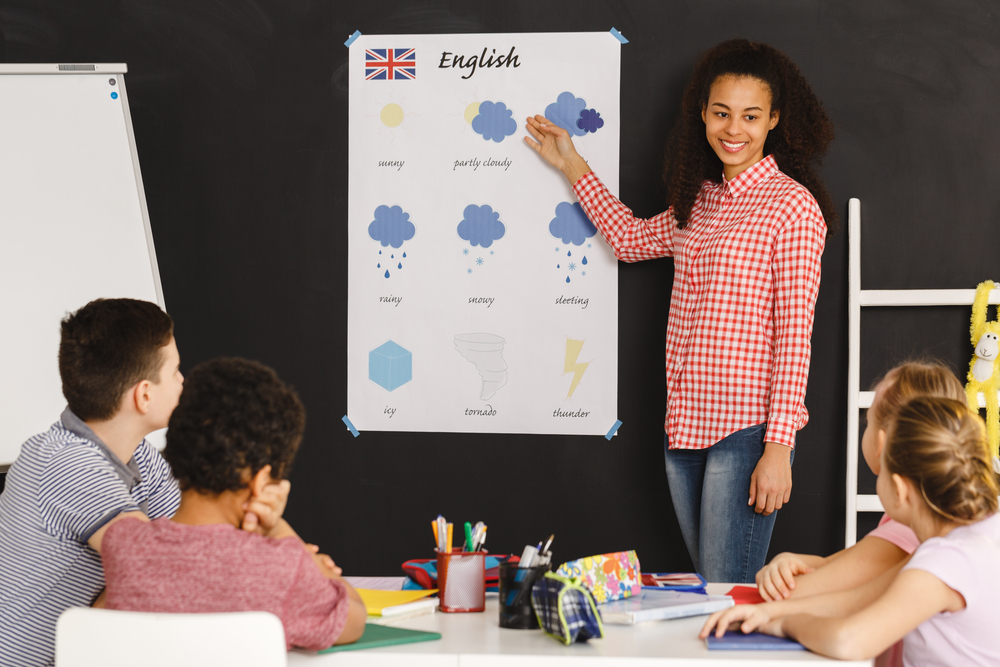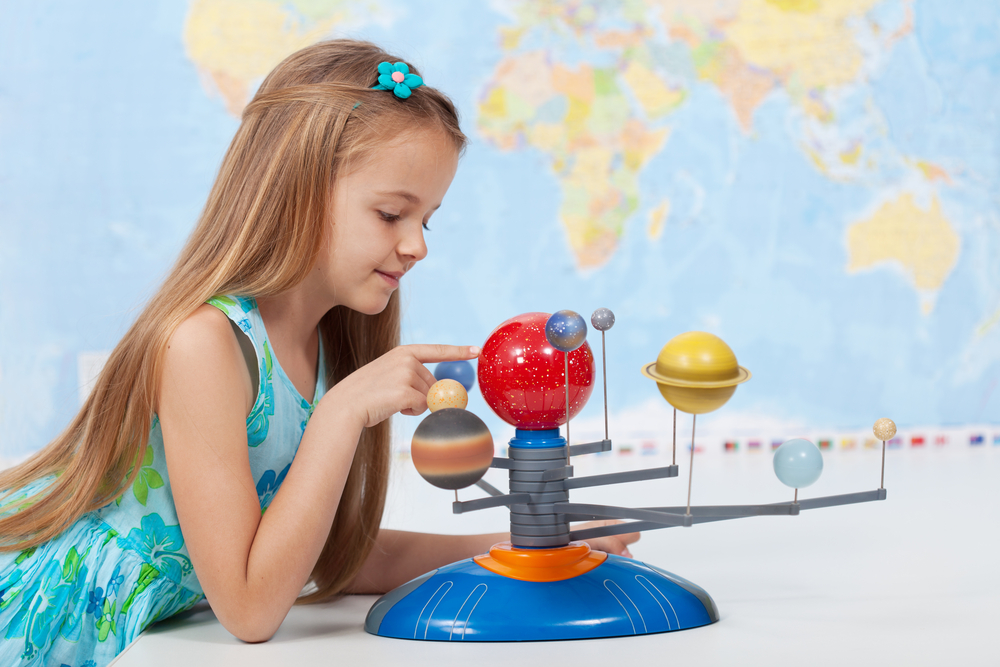Reading Comprehension worksheets activities for Ages 3-4
12 filtered results
-
From - To


Finding the Details and Connections: Assessment 2 Worksheet
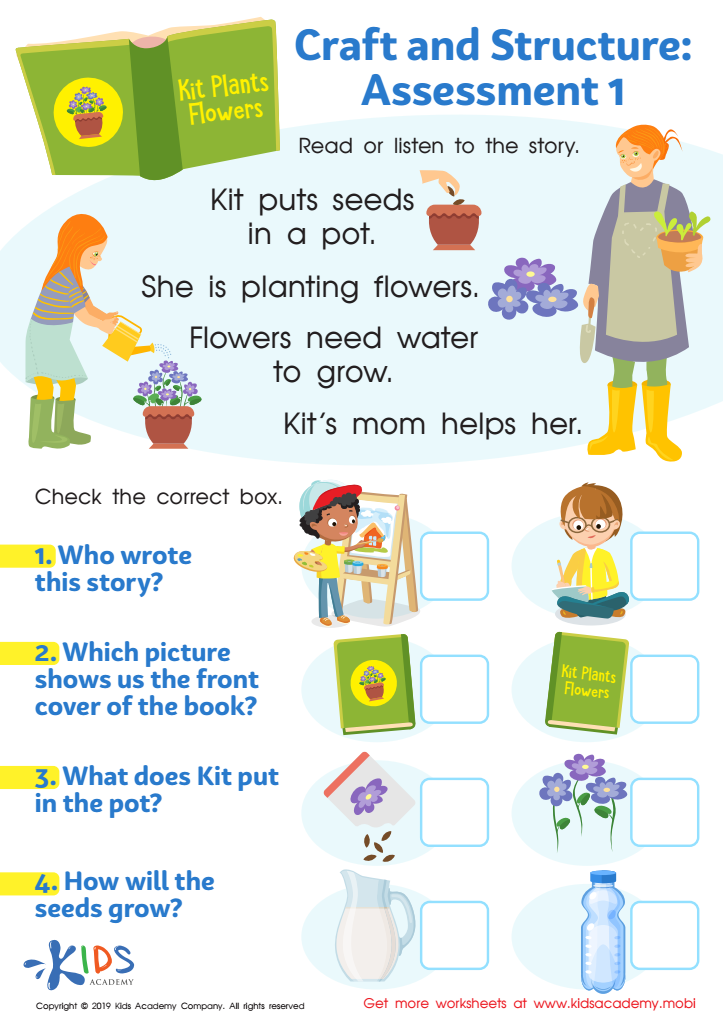

Craft and Structure: Assessment 1 Worksheet
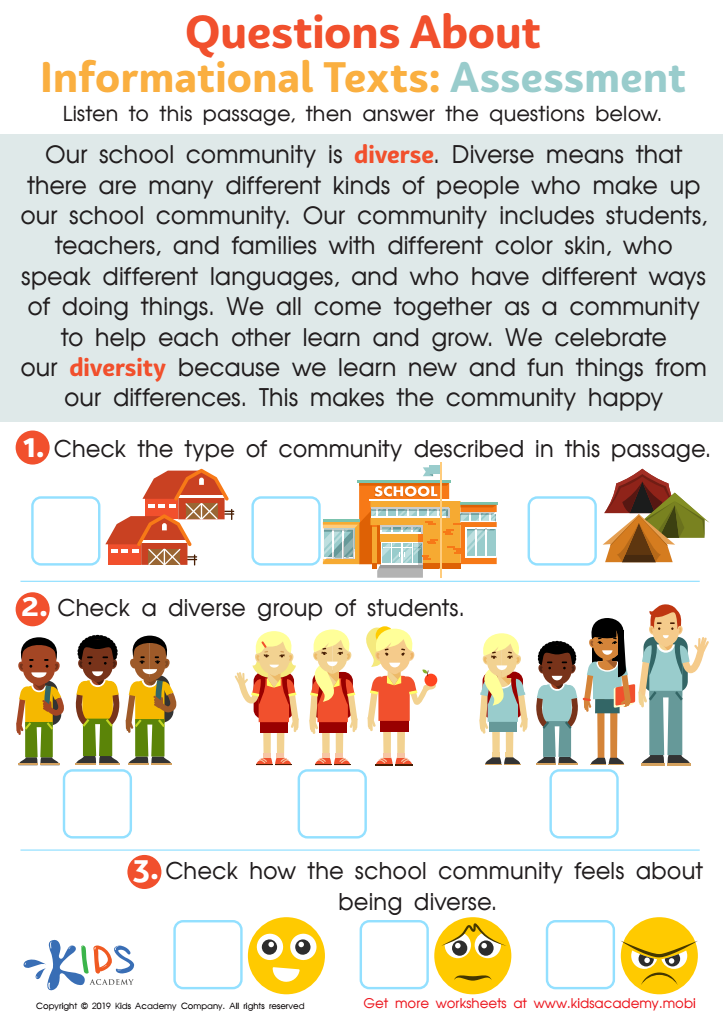

Questions About Informational Texts: Assessment 1 Worksheet
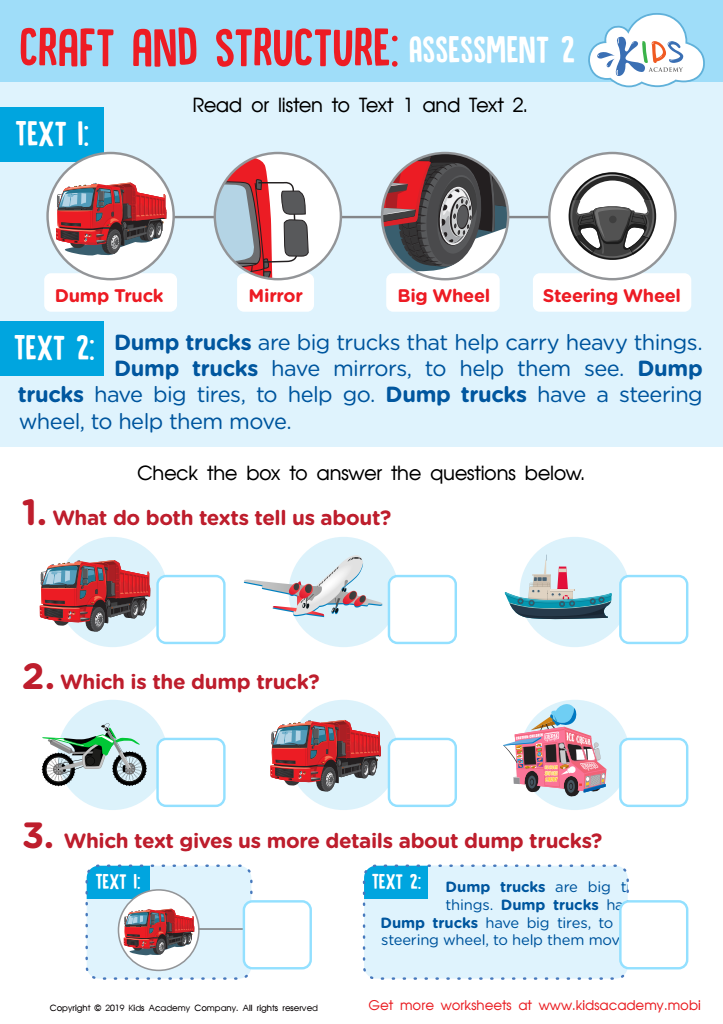

Craft and Structure: Assessment 2 Worksheet
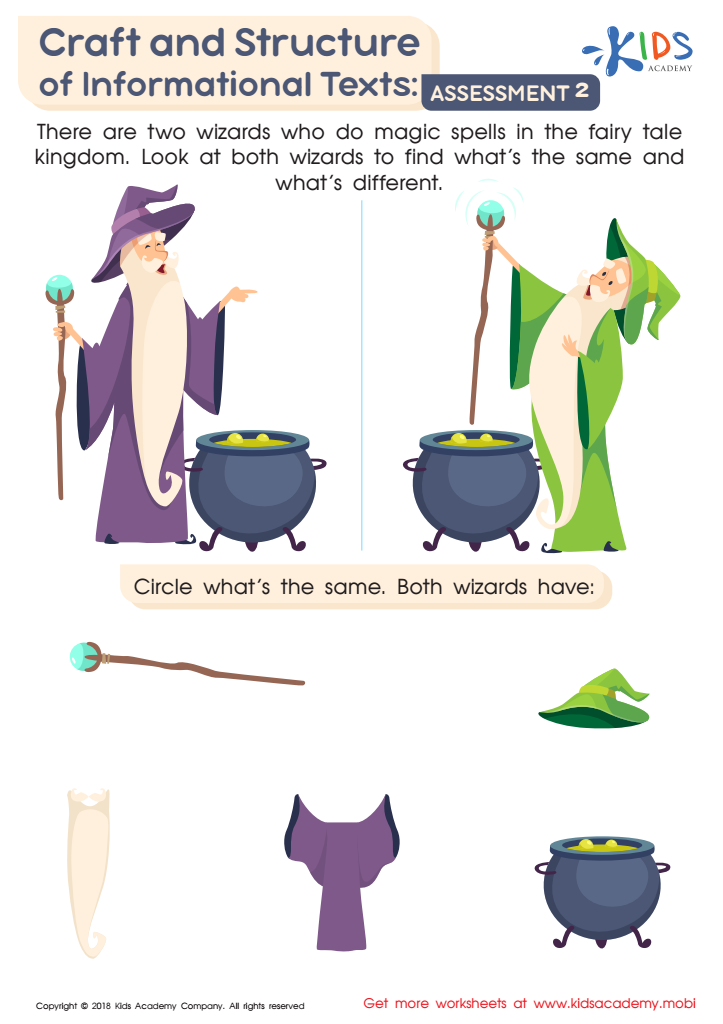

Craft and Structure of Informational Texts: Assessment 2 Worksheet
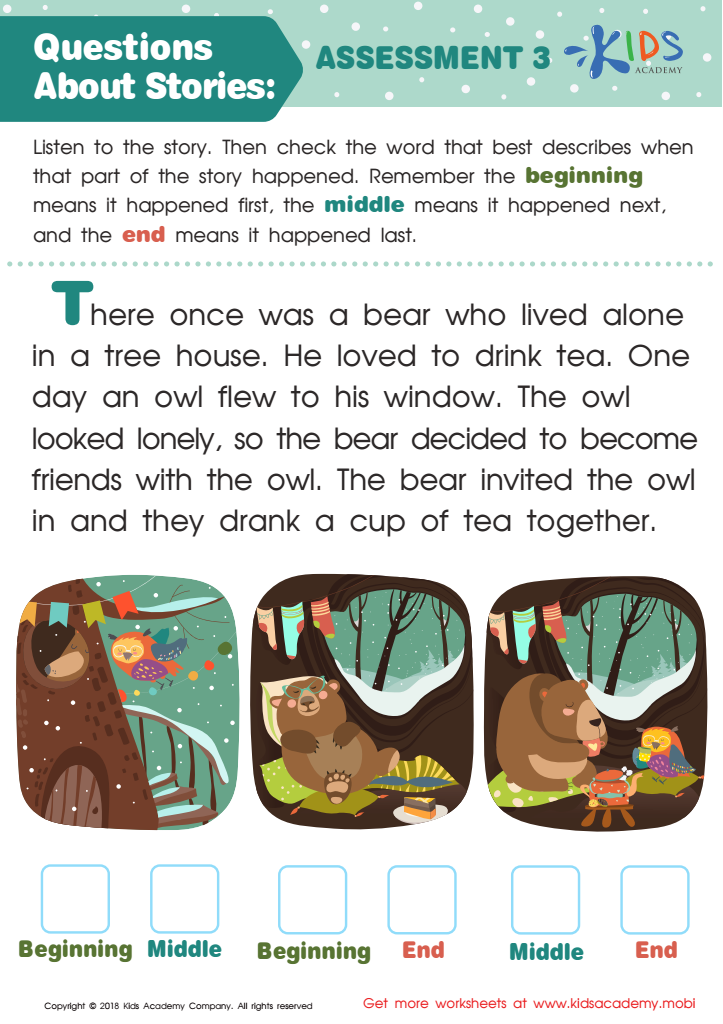

Questions About Stories: Assessment 3 Worksheet
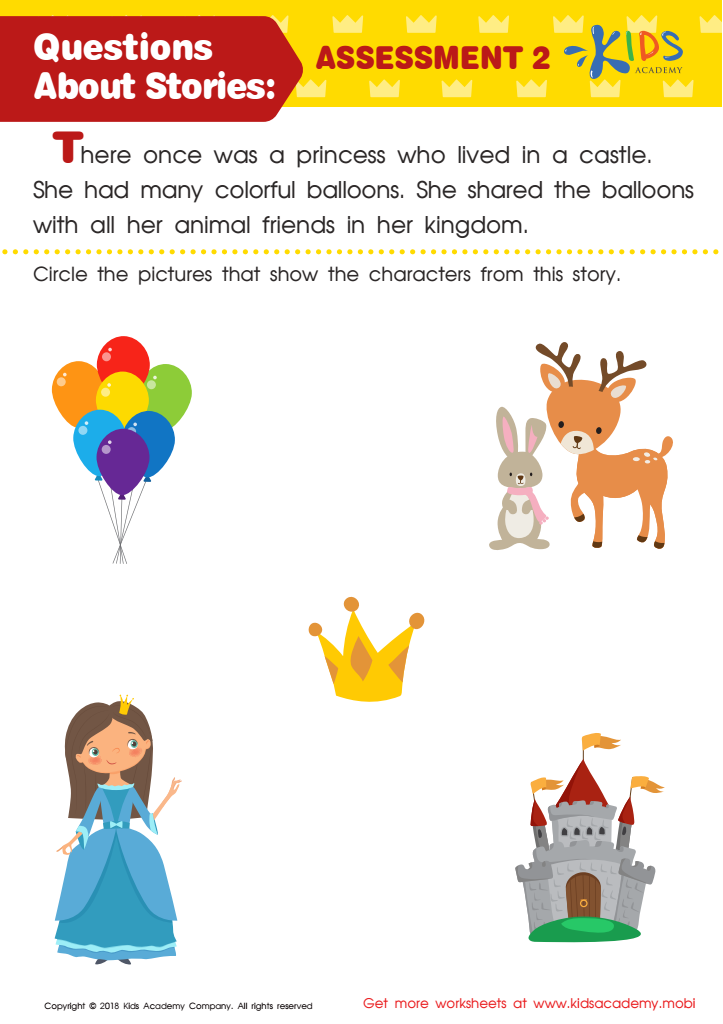

Questions About Stories: Assessment 2 Worksheet
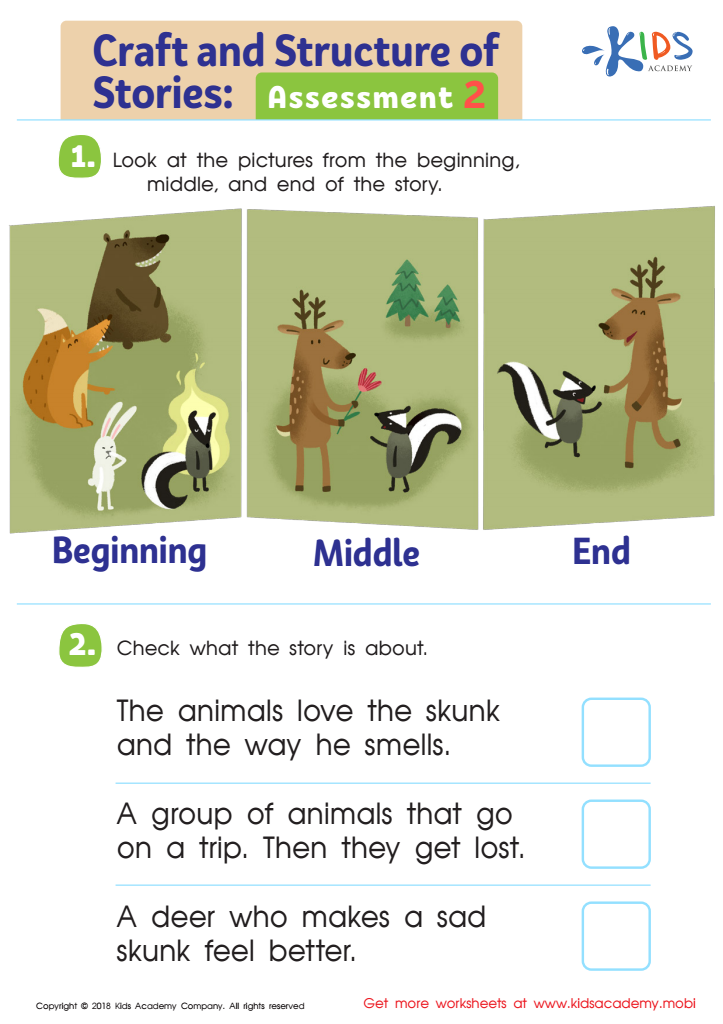

Craft and Structure of Stories: Assessment 2 Worksheet
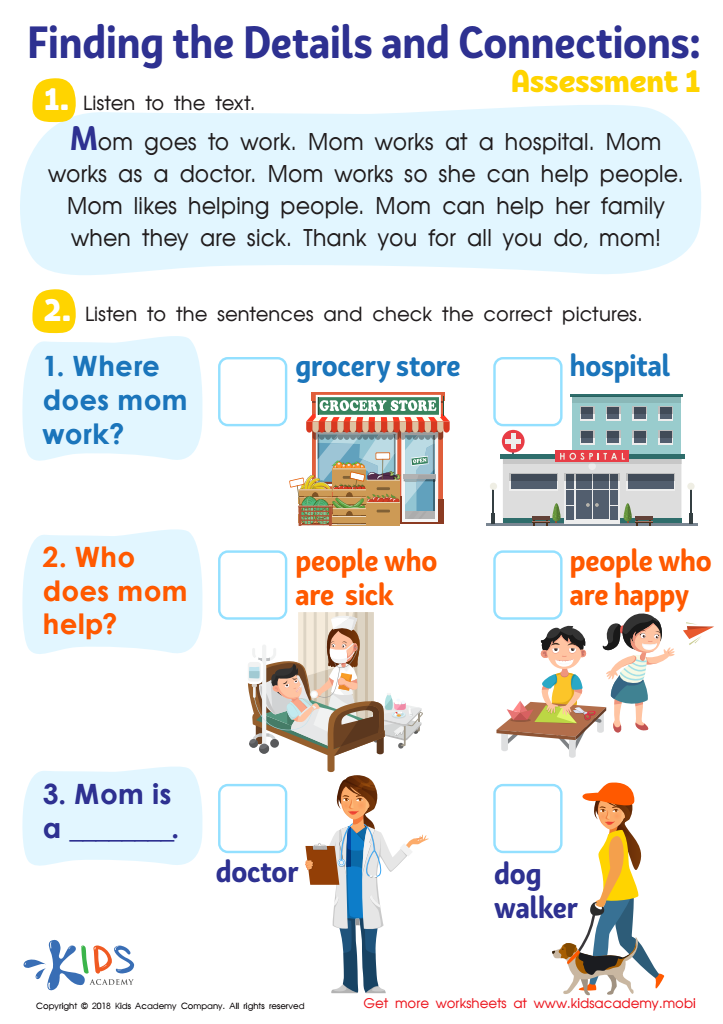

Finding the Details and Connections: Assessment 1 Worksheet
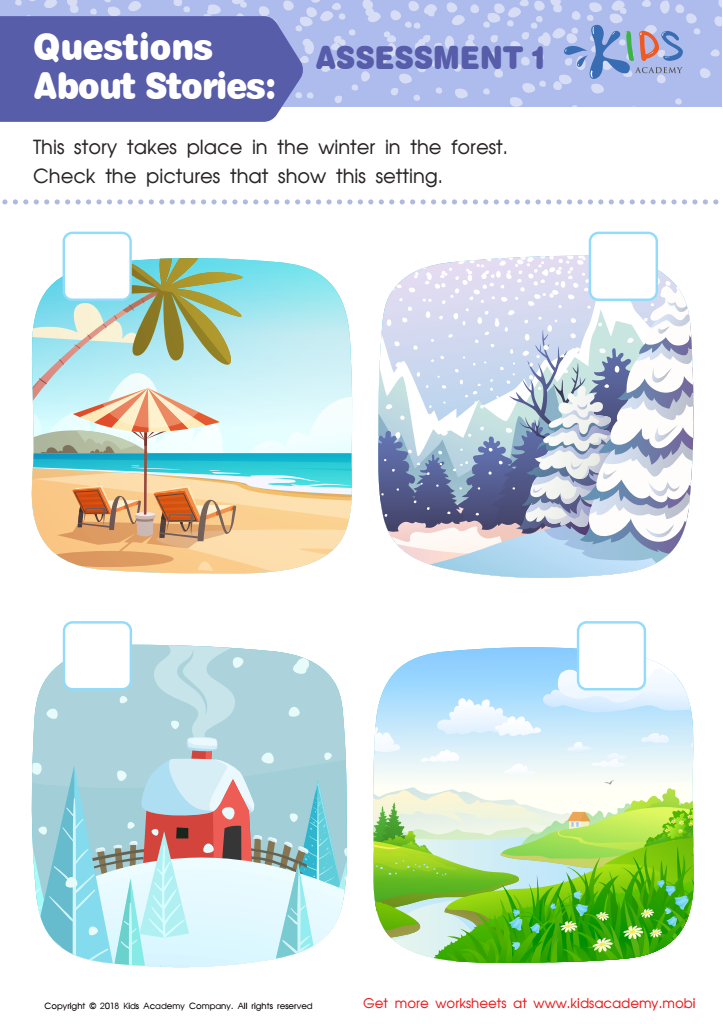

Questions About Stories: Assessment 1 Worksheet


Craft and Structure of Informational Texts: Assessment 1 Worksheet
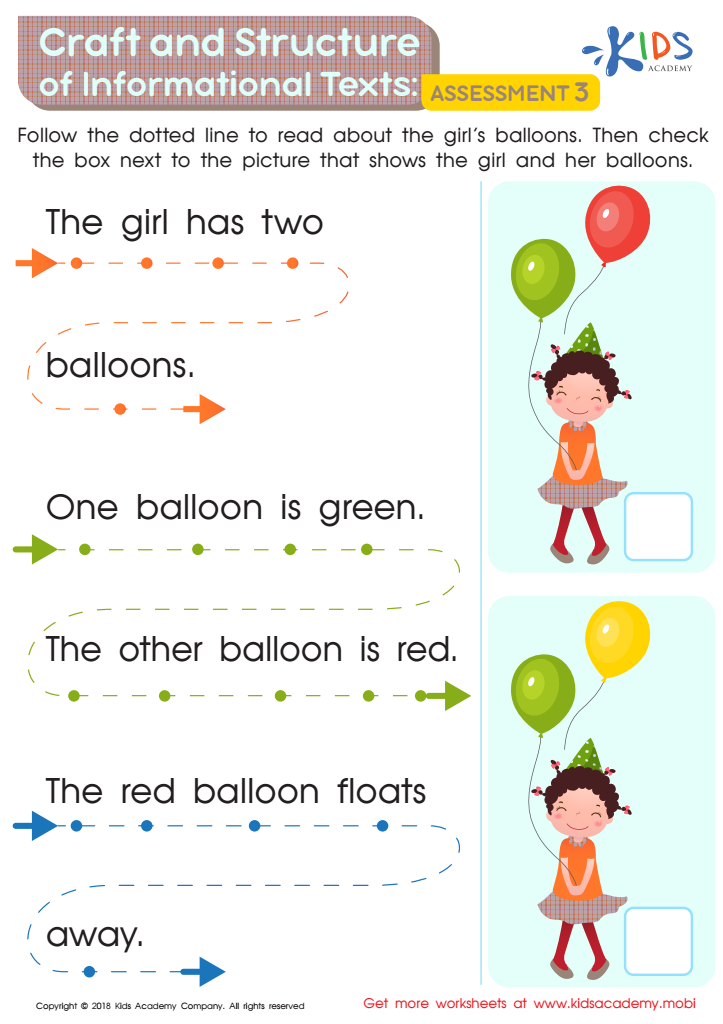

Craft and Structure of Informational Texts: Assessment 3 Worksheet
Reading Comprehension worksheets activities are an indispensable tool in the journey to becoming a proficient reader. They are designed to not only improve a student's ability to understand and interpret texts but also to foster a deep love and enthusiasm for reading. Through a careful combination of engagement, practice, and review, these activities cater to learners at all levels, making them versatile and essential resources.
First and foremost, Reading Comprehension worksheets activities are exceptionally useful because they provide structured and systematic practice. They are crafted to gradually increase in complexity, ensuring that learners can build their skills step by step. This scaffolding approach makes comprehension attainable and less daunting for all students, regardless of their starting point. By engaging with texts of varying genres, themes, and styles, students expand their understanding and appreciation of language and literature.
Moreover, these activities enhance critical thinking and analytical skills. Students are not only asked to understand what they read but also to interpret, infer, and critique the content. This deep engagement with the text cultivates a higher level of thinking and encourages students to interact with texts more thoughtfully. Such skills are invaluable, extending beyond academic success to benefit learners in everyday life scenarios.
Another significant advantage of Reading Comprehension worksheets activities is the immediate feedback they offer. Whether working in a classroom setting or practicing independently, students can assess their understanding through quizzes, discussions, and written responses. This immediate assessment helps to identify areas of strength and weakness, allowing for targeted improvement and fostering a sense of accomplishment as progress is made.
In conclusion, Reading Comprehension worksheets activities are a cornerstone of effective reading instruction. They not only enhance understanding and interpretation of texts but also develop critical thinking and analytical skills. Through engaging, structured, and reflective practices, these activities are instrumental in nurturing proficient, thoughtful, and enthusiastic readers.
 Assign to the classroom
Assign to the classroom




